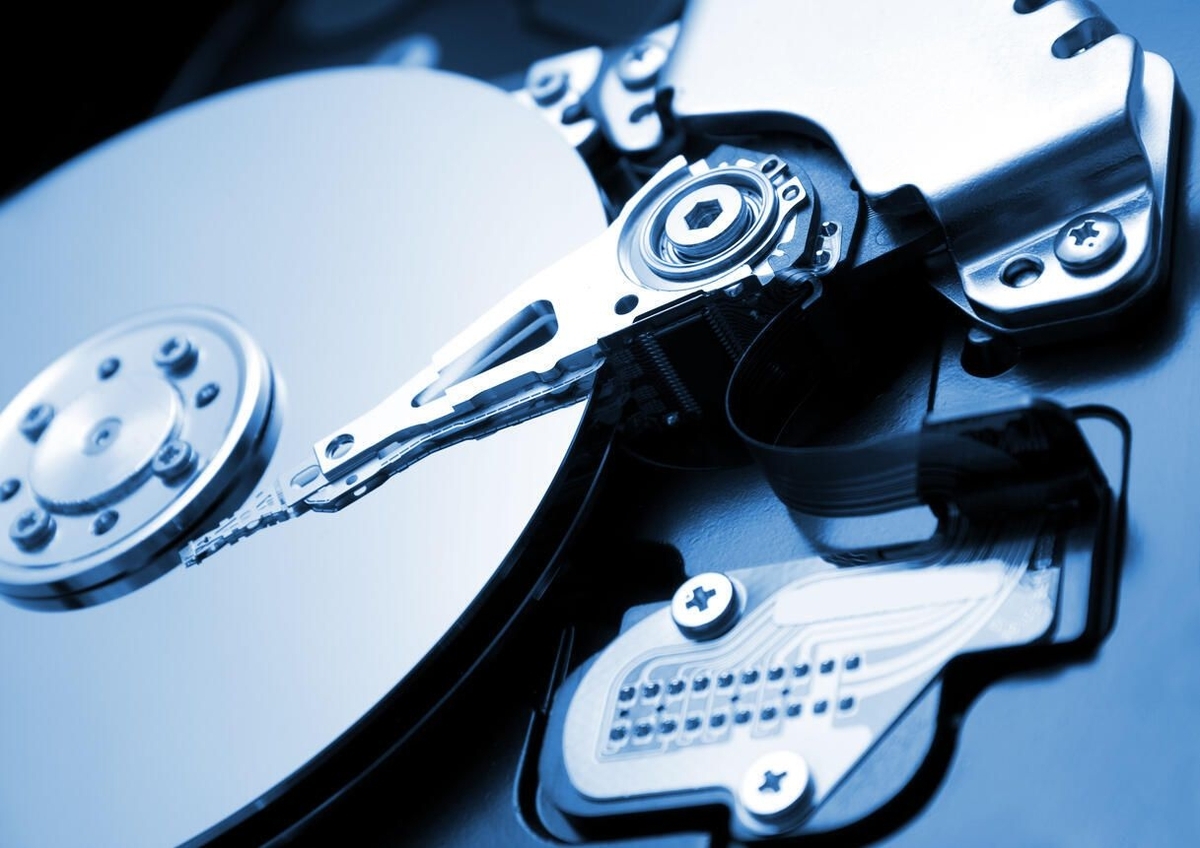The Demand for Larger Hard Drives
In today’s digital age, the demand for larger hard drives has become increasingly evident. As technology advances, so does the need for more storage space to accommodate the ever-growing amounts of data we generate and consume. From high-resolution photos and videos to large software applications and extensive music libraries, our digital lives require significant storage capacity.
One of the main driving factors behind the demand for larger hard drives is the exponential growth of data. With the rise of social media, cloud storage, and the Internet of Things (IoT), the volume of data being produced and stored has skyrocketed. Individuals and businesses alike need larger hard drives to store and access this massive amount of information.
Furthermore, advancements in various industries, such as artificial intelligence, machine learning, and virtual reality, have contributed to the need for increased storage capacity. These technologies rely heavily on vast amounts of data for processing and analysis, making larger hard drives vital for their operation.
Additionally, multimedia content is becoming more prevalent and data-intensive, further driving the need for larger hard drives. High-definition videos, 4K resolution images, and complex video games all require significant storage space.
Beyond personal and entertainment use, industries such as healthcare, finance, and engineering heavily rely on data storage. Medical records, financial transactions, and large-scale engineering designs all contribute to the demand for expanded storage capabilities.
Furthermore, the trend of remote work and cloud-based services has also fueled the demand for larger hard drives. As more individuals and businesses utilize cloud storage solutions, the need for local storage that can easily sync with cloud platforms becomes essential.
Overall, the demand for larger hard drives is driven by the exponential growth of data, advancements in technology, the increasing prevalence of multimedia content, and the rise of remote work and cloud-based services. To meet these demands, data storage technology must continue to evolve and innovate.
The Advancements in Data Storage Technology
Data storage technology has come a long way in recent years, addressing the growing need for larger and more efficient storage solutions. Innovations in this field have allowed us to store and access massive amounts of data faster and more reliably than ever before.
One of the significant advancements in data storage technology is the transition from traditional hard disk drives (HDD) to solid-state drives (SSD). SSDs, which use flash memory to store data, offer significant advantages over HDDs, including faster read and write speeds, lower power consumption, and enhanced durability. This technology has revolutionized the storage industry, providing faster and more efficient data retrieval for both personal and enterprise use.
Another notable advancement is the increase in storage capacity. Manufacturers have been working tirelessly to develop hard drives with larger and larger capacities. What once seemed like an unattainable feat, terabyte (TB) and even petabyte (PB) drives are now a reality. By utilizing various technologies and innovative design approaches, storage devices can now store vast amounts of data in a compact form.
In recent years, there has also been a shift towards cloud-based storage solutions. Cloud storage allows for the storing and accessing of data over the internet, eliminating the need for physical storage devices. Companies like Amazon, Google, and Microsoft offer cloud storage services with immense storage capacities and high levels of data security. This advancement in data storage technology has enabled efficient data management and accessibility from anywhere in the world.
Additionally, data deduplication and compression technologies have significantly improved storage efficiency. These techniques eliminate redundant data and optimize storage utilization, resulting in cost savings and increased capacity. By reducing the physical footprint required for storing data, these advancements have paved the way for more efficient and scalable storage solutions.
Lastly, data storage technology has evolved to provide better data protection and security measures. Advanced encryption algorithms, RAID configurations, and backup systems have bolstered the security of stored data, protecting it from unauthorized access, data loss, and system failures. This increased emphasis on data security has been pivotal in building trust and confidence among users and organizations relying on storage systems.
HAMR: The Future of Hard Drives
Heat-Assisted Magnetic Recording (HAMR) is widely regarded as the future of hard drives, offering the potential for even larger storage capacities and higher data densities. As the demand for more storage space continues to grow, HAMR technology presents a promising solution to meet these increasing storage needs.
The core concept behind HAMR is the use of a laser to heat the disk surface before data is written, allowing greater control and precision in the magnetic recording process. By temporarily heating the recording medium, the magnetic grains become more receptive to data storage, resulting in higher areal densities.
As traditional recording methods face challenges in maintaining data density, HAMR offers a breakthrough solution. By enabling smaller magnetic grains, HAMR allows for more data to be stored in the same physical space, significantly increasing storage capacity.
The challenges of implementing HAMR technology have been significant, primarily due to the precise control required in heat delivery and the reliability of the recording medium. However, years of research and development have led to significant advancements in overcoming these challenges, bringing HAMR closer to commercial viability.
Seagate, one of the leading manufacturers of hard drives, has been at the forefront of HAMR technology. Through their extensive research and testing, Seagate has demonstrated the potential of HAMR to achieve storage capacities of up to 80 terabytes per drive by 2028. This breakthrough promises to address the ever-increasing storage demands of individuals and businesses.
Furthermore, HAMR technology not only offers increased storage capacities but also improved performance. The precise and controlled magnetic recording process results in faster access times and data transfer rates, providing a significant boost in overall hard drive performance.
While Solid-State Drives (SSDs) have gained popularity for their impressive performance and reliability, the cost per terabyte of storage remains significantly higher than that of traditional hard drives. HAMR technology aims to bridge this gap by providing cost-effective storage solutions with unparalleled capacities and competitive performance.
Looking ahead, HAMR holds immense potential in shaping the future of hard drives. With ongoing advancements and continual research, the widespread adoption of HAMR technology could revolutionize the data storage landscape, providing individuals and businesses with even greater storage capabilities and unrivaled performance.
How HAMR WorksHeat-Assisted Magnetic Recording (HAMR) is an innovative technology that employs a two-step process to achieve higher data density and storage capacity. This technique combines traditional magnetic recording with a laser-assisted heat component to enable more precise and efficient data storage.
The HAMR process begins with a laser heating a tiny area on the disk’s surface, referred to as the “hot spot.” This localized heating raises the temperature to a critical level, typically around 450 degrees Celsius (842 degrees Fahrenheit). At this elevated temperature, the disk’s magnetically sensitive material, known as the recording medium, becomes more receptive to magnetic changes.
Once the recording medium is heated, the next step is writing the data. A magnetic write head, similar to those used in traditional hard drives, passes over the heated spot and applies a magnetic field to align the magnetic grains. The write head magnetizes the grains in a particular pattern, representing the data being written. As the disk cools, the aligned grains retain their magnetization, preserving the recorded data on the disk surface.
It’s worth noting that HAMR technology utilizes new materials with higher coercivity, which allows the magnetic field to maintain its strength even at higher densities. This ensures that the data remains stable and can be reliably read back when needed.
During the read process, a different magnetic head reads the information stored on the disk. The read head detects the changes in the magnetic fields caused by the aligned grains, converting the signals into digital data that can be accessed by the computer or storage system.
The key advantage of HAMR over traditional magnetic recording techniques is the precise control it offers in writing data. The localized heating enables smaller magnetic grains to be formed, resulting in higher areal densities. By packing more data into the same physical space, HAMR allows for significantly increased storage capacities in hard drives.
It is worth mentioning that HAMR technology requires special heat-resistant materials and precise manufacturing processes to ensure durability and long-term data integrity. Extensive research and development have been focused on optimizing the materials and manufacturing technologies required for successful implementation of HAMR in commercial hard drives.
With its ability to achieve higher data densities and storage capacities, HAMR technology brings the possibility of substantial advancements in the field of data storage, meeting the growing demands of our data-driven world.
The Challenges of Implementing HAMR
Despite the immense potential of Heat-Assisted Magnetic Recording (HAMR) technology, several challenges have arisen that need to be addressed for its successful implementation in commercial hard drives.
One of the primary challenges is the precise control of the laser-assisted heat component. Achieving the correct temperature for the recording medium is crucial for the magnetic writing process. Ensuring consistent and uniform heating across the disk surface can be a complex task, requiring advanced laser technology and precise calibration to avoid overheating or inadequate heating.
Another significant challenge lies in developing the recording medium materials capable of withstanding the high temperatures generated during the HAMR process. Heat-resistant materials must be able to maintain their magnetic properties and structural integrity under the thermal stress of repeated heating cycles.
Reliability and robustness are also important considerations in implementing HAMR technology. The increased heat exposure and repeated use of the recording medium can lead to potential issues such as thermal expansion, material fatigue, and wear. Extensive testing and optimization are required to ensure the long-term durability and reliability of HAMR-based hard drives.
Furthermore, there is a need for technologies to enhance the precision of writing data on the heated spot. The alignment of smaller magnetic grains requires greater accuracy and control to maintain data integrity. Ensuring minimal errors and maintaining consistent writing quality are crucial for the successful implementation of HAMR technology.
The introduction of HAMR technology also presents challenges in terms of cost and production scalability. The complex manufacturing processes and specialized materials needed for HAMR-based hard drives may increase production costs. Developing cost-effective solutions and optimizing production scalability are essential to make HAMR technology commercially viable and widely accessible.
In addition, the compatibility of HAMR-based hard drives with existing systems and infrastructure is another challenge. Ensuring seamless integration and support across various operating systems and platforms while maintaining backward compatibility with older technologies is essential for user adoption and industry adoption of HAMR technology.
While these challenges exist, ongoing research and development efforts are focused on addressing them. Industry leaders and researchers are working towards enhancing the efficiency, reliability, and affordability of HAMR technology, bringing us closer to the widespread implementation of HAMR-based hard drives and the promised benefits they offer.
The Potential Benefits of HAMR Technology
Heat-Assisted Magnetic Recording (HAMR) technology holds tremendous potential in transforming the capabilities of hard drives. By addressing the challenges of increasing storage capacity and data density, HAMR technology offers several benefits that can revolutionize the field of data storage.
One of the key advantages of HAMR technology is the ability to achieve significantly larger storage capacities. By utilizing smaller magnetic grains made possible by the precise laser-assisted heating process, HAMR allows for packing more data into the same physical space. This breakthrough can lead to hard drives with terabytes, or even petabytes, of storage capacity, meeting the ever-growing demand for storage space.
In addition to increased storage capacity, HAMR technology offers enhanced data density. By packing more data into each square inch of the disk’s surface, HAMR enables higher areal densities. This means that more data can be stored on a single hard drive, reducing the need for multiple drives and enabling more efficient storage solutions.
Another benefit of HAMR technology is the potential for improved performance. The precise magnetic recording process, combined with advancements in materials and manufacturing, allows for faster data access and transfer speeds. This can significantly reduce the time required to retrieve and store data, enhancing the overall performance of HAMR-based hard drives.
Furthermore, HAMR technology brings the promise of cost-effective storage solutions. Traditional hard drives have long been known for their cost-effectiveness compared to solid-state drives (SSDs), but HAMR technology can bridge the gap even further. With increased storage capacities and competitive performance, HAMR-based hard drives can provide a more affordable alternative to SSDs for individuals and businesses with substantial storage needs.
Another potential benefit of HAMR technology is its compatibility with existing hard drive form factors. As HAMR technology continues to develop, hard drive manufacturers can integrate HAMR technology into standard hard drive form factors, making it easier for users to upgrade their storage solutions without requiring major system changes or infrastructure overhauls.
Last but not least, HAMR technology can contribute to reducing the environmental impact of data storage. By enabling larger storage capacities within smaller physical footprints, HAMR-based hard drives can help optimize data center space, leading to reduced energy consumption and a smaller carbon footprint.
HAMR vs. SSDs: Which is Better?
When it comes to comparing Heat-Assisted Magnetic Recording (HAMR) and Solid-State Drives (SSDs), determining which technology is better depends on specific requirements and use cases. Both HAMR and SSDs offer unique advantages and cater to different needs in the field of data storage.
Let’s first consider the primary advantage of HAMR: its potential for much larger storage capacities. As HAMR technology continues to evolve, hard drives using HAMR can achieve terabytes or even petabytes of storage capacity. This makes HAMR an excellent choice for individuals and businesses with massive storage needs, such as those in data-intensive industries or organizations working with large-scale databases.
On the other hand, SSDs excel in terms of performance. SSDs utilize flash memory and have no moving parts, allowing for lightning-fast read and write speeds. This results in faster data access and transfer rates compared to HAMR-based hard drives. SSDs are ideal for applications that require quick access to data, such as gaming, video editing, and virtual machine hosting.
Another significant factor to consider when comparing HAMR and SSDs is cost. Currently, SSDs are generally more expensive per terabyte of storage compared to HAMR-based hard drives. HAMR offers a cost-effective solution for achieving large storage capacities, making it a more affordable option for those who require vast amounts of storage space without breaking the bank.
Reliability is also an essential consideration. Traditional hard drives, including those using HAMR technology, have been known for their durability and long lifespan. On the other hand, SSDs have a limited number of write cycles before they wear out. However, SSD technology has come a long way, and modern SSDs are highly reliable, making them suitable for everyday use.
Lastly, compatibility is a factor to consider. HAMR-based hard drives are designed to fit into standard hard drive form factors, making them easily compatible with existing systems and infrastructure. SSDs, on the other hand, often require specific connectors or adapters, which may pose compatibility challenges during upgrades or replacements.
The Future of Hard Drives with HAMR
Heat-Assisted Magnetic Recording (HAMR) technology is poised to reshape the future of hard drives, offering the potential for significantly larger storage capacities and higher data densities. As the technology continues to advance and overcome its challenges, the adoption of HAMR-based hard drives is expected to become more widespread.
One of the key aspects of the future of hard drives with HAMR is the continuous increase in storage capacities. With the ability to pack more data into smaller physical spaces, HAMR-based hard drives offer a solution to the ever-increasing need for storage space. As HAMR technology matures, we can expect to see hard drives with terabytes and even petabytes of storage capacity becoming the norm.
Furthermore, as HAMR technology evolves, the performance of hard drives is also expected to improve significantly. The precise magnetic recording process of HAMR technology allows for faster read and write speeds, reducing data access times and boosting overall performance. This enhanced performance will benefit a wide range of applications, from high-definition video editing to enterprise-level data processing.
Another exciting aspect of the future of hard drives with HAMR is the potential for increased reliability and durability. With ongoing research and development efforts, the challenges associated with the reliability of HAMR-based hard drives are being effectively addressed. Advances in materials, manufacturing techniques, and thermal management are expected to enhance the longevity and robustness of HAMR-based hard drives, ensuring their suitability for even the most demanding environments.
In terms of cost-effectiveness, HAMR-based hard drives offer an attractive solution. As the technology matures and economies of scale come into play, the cost per terabyte of storage is expected to decrease, making HAMR-based hard drives more affordable and accessible to a broader range of users and organizations. This cost-effectiveness, combined with the potential for massive storage capacities, positions HAMR as a compelling choice for those with large amounts of data to store and manage.
Additionally, HAMR technology’s compatibility with existing hard drive form factors enhances its adoption potential. Hard drive manufacturers are working towards integrating HAMR technology seamlessly into standard hard drive designs, making it easier for users to upgrade their storage solutions without significant system changes or compatibility issues.
Overall, the future of hard drives with HAMR technology is promising. With the potential for larger storage capacities, improved performance, enhanced reliability, cost-effectiveness, and compatibility, HAMR-based hard drives are expected to become increasingly prevalent in the coming years. These advancements will empower users and organizations with the storage capabilities needed to meet the ever-growing demands of our data-driven world.








